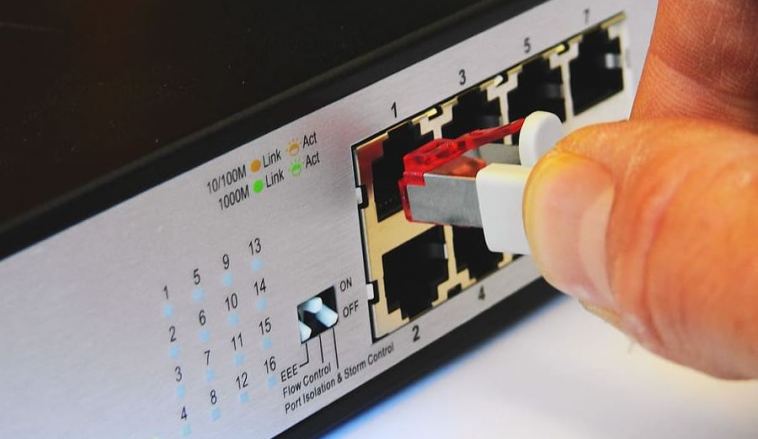- Like
- SHARE
- Digg
- Del
- Tumblr
- VKontakte
- Flattr
- Buffer
- Love This
- Save
- Odnoklassniki
- Meneame
- Blogger
- Amazon
- Yahoo Mail
- Gmail
- AOL
- Newsvine
- HackerNews
- Evernote
- MySpace
- Mail.ru
- Viadeo
- Line
- Comments
- Yummly
- SMS
- Viber
- Telegram
- JOIN
- Skype
- Facebook Messenger
- Kakao
- LiveJournal
- Yammer
- Edgar
- Fintel
- Mix
- Instapaper
- Copy Link
Just like a postal service requires an address to deliver post, devices also require an address to transmit data. There are various types of addresses that are used in a computer network. Each of these addresses work in a different layer and serve a unique function. MAC address is one of them and it works in the Data Link Layer (DLL).
Media Access Control Layer
The Media Access Control Layer or MAC is an identification number for hardware which is manufactured into each network card. MAC address lets you gain access to the network interface controller (NIC) which is also known as network adapter.
Every device has a unique MAC address comprising of 48-bits. The address consists of six groups of two characters each (can be numbers or alphabets) and can be separated by hyphens and colons or nothing at all. MAC address is also called the physical address of a device. For example, MAC address on a Windows computer can read like this A4-Fb-5A-7D-41-A4, or a4:fb:5a:7d:41:a4 or A4FB5A7D41A4.
MAC addresses are not case sensitive, but they are written in either all caps or all lower case. When you change a digit from the MAC address, you will have to get a new MAC address.
The data link layer (DLL) is divided into two sub layers in IEEE 802 standard:
- Logical Link Control (LLC)
- Media Access Control (MAC)
Thus, MAC address is used by the media access control layer.
MAC vs IP Address
MAC and IP address are both very important for a network to function smoothly. Both are used as identification mechanisms, but on different levels. However, both MAC and IP work hand in hand in a network so changing one will change the performance of the other.
The main difference between IP address and MAC is that MAC is used as the identification of the hardware. Therefore, it is special for each device which is manufactured anywhere around the world. IP addresses are unique to every connection which is made on the network where the device connects to transmit and receive data.
MAC Cloning
Some Internet Service Providers (ISPs) use a MAC address to dedicate an IP address to a gateway device. When a device connects to the ISP, the DHCP server notes its MAC address to dedicate an IP address. This way, the system can be identified using the MAC address. upon disconnection, the device loses its IP address. If the same device wants to reconnect, the DHCP server will check if the device connected before to assign the same IP address. However, if the router has changed then the user will have to update the ISP about the device change and a new MAC address will be required.
MAC cloning is when the user clones the registered MAC address of a device with the ISP. The router will keep reporting the old MAC address to the ISP and connection will remain intact.
Some More Features of MAC
- MAC addresses are permanent and unique and embedded in a device, just like a vehicle identification number is embedded in a car
- A new device will have its MAC address written on it, so everyone can see this address. It is good to keep this address hidden from unwanted visitors.
- Other names for MAC address are physical address, basic service set identifier, Ethernet hardware address and adapter address
- The MAC address functions on the “link layer” of OSI.
Conclusion
In a nutshell, a MAC Address serves a variety of purposes, but perhaps its most important function is to prevent adversaries from gaining access to a network. Both MAC and IP addresses are unique identifiers, and they combine often to make data transmission safe. Today, the MAC address is used across global networks, since there are millions of network-reliant devices out there and administrators have to uniquely identify each.


